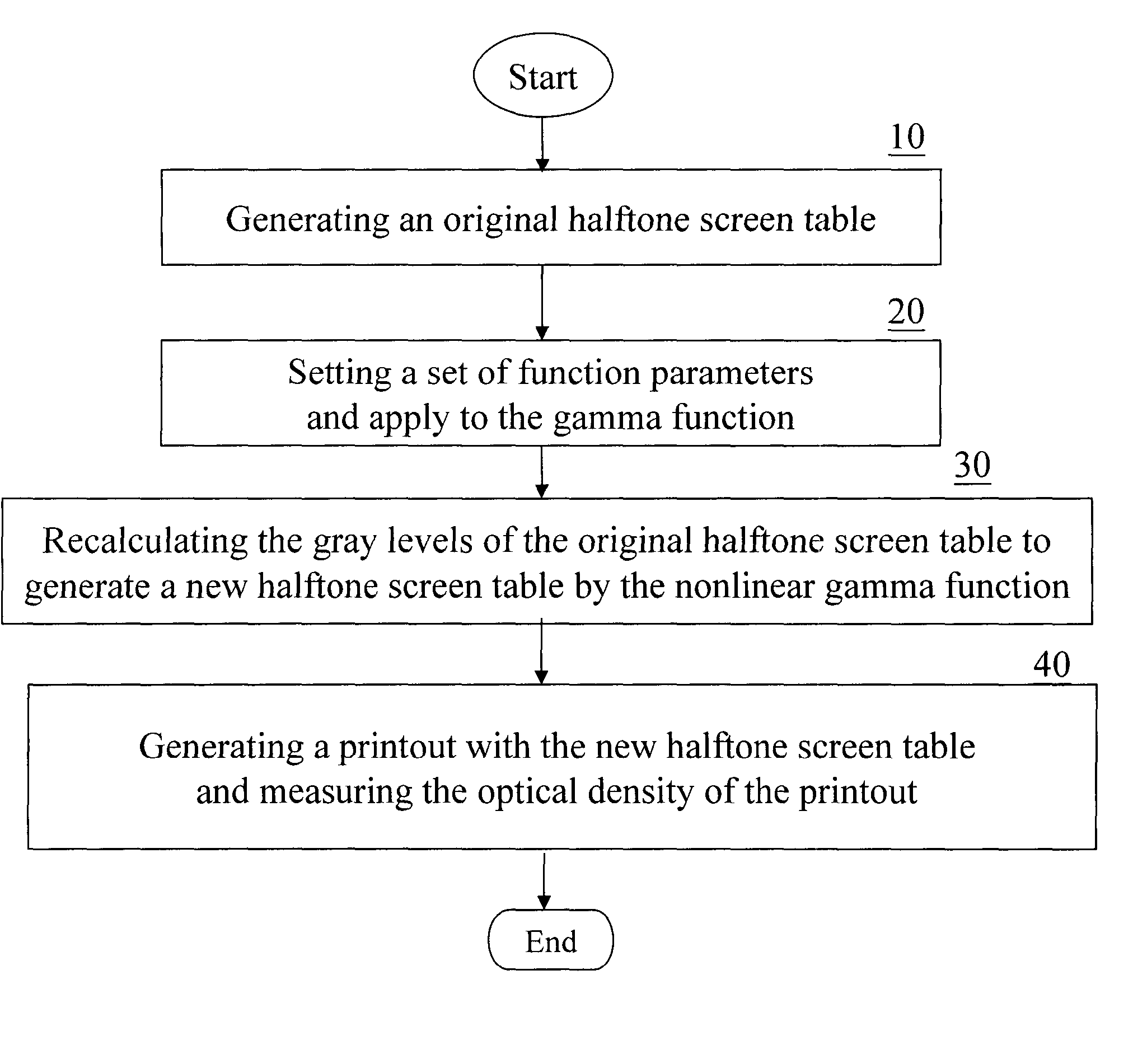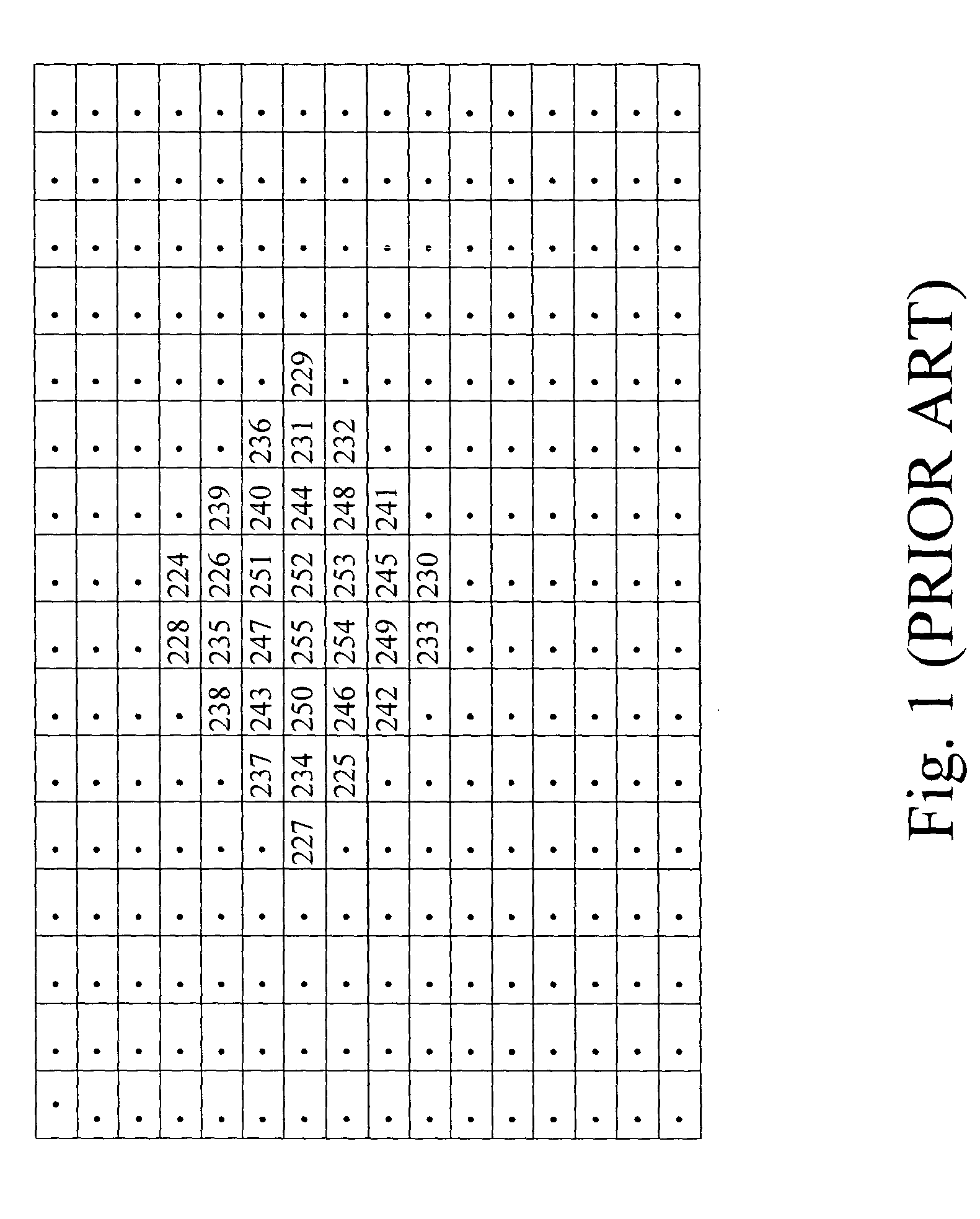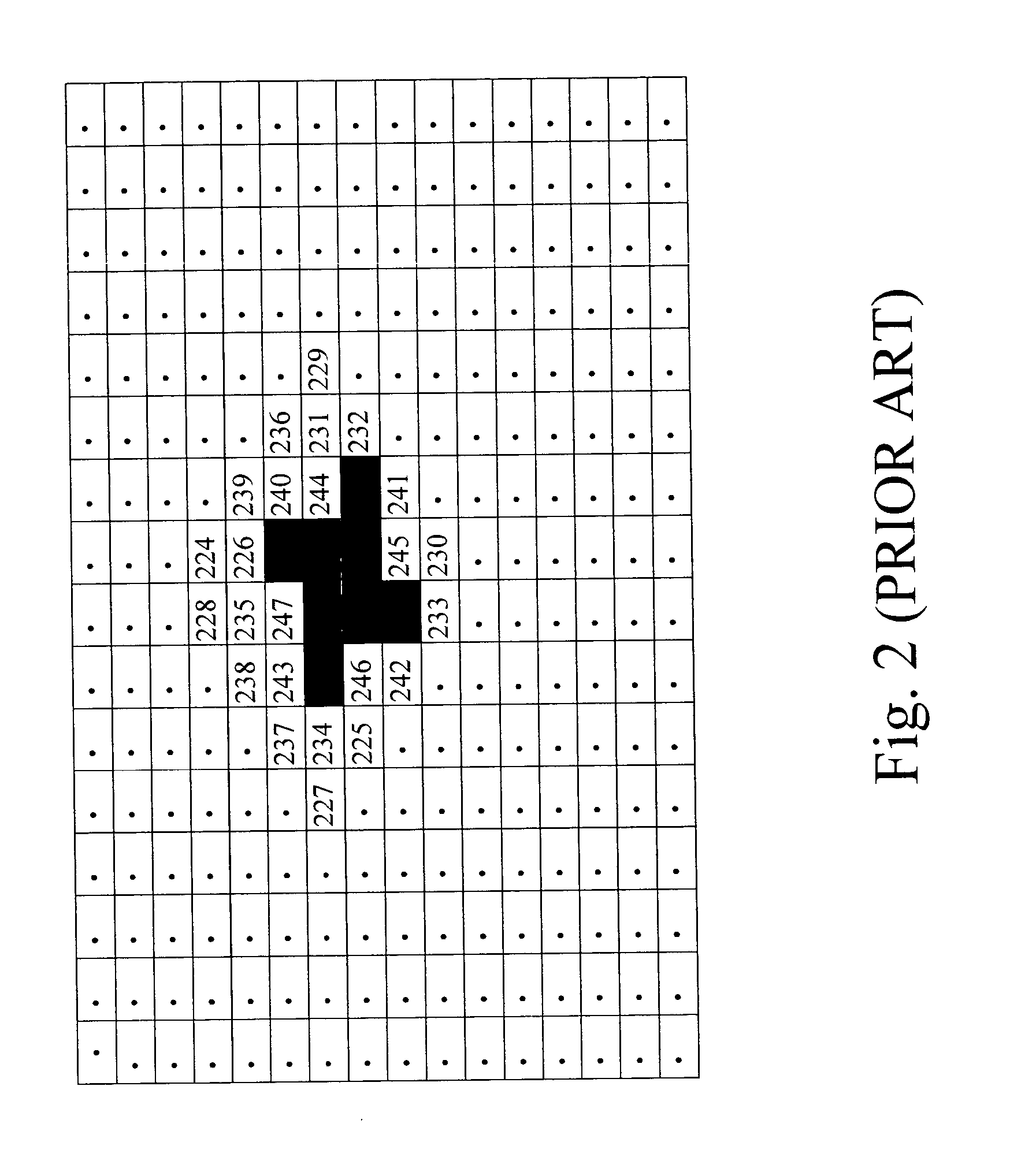Method of nonlinear calibration of halftone screen
- Summary
- Abstract
- Description
- Claims
- Application Information
AI Technical Summary
Benefits of technology
Problems solved by technology
Method used
Image
Examples
Embodiment Construction
According to the invention, a method of nonlinear calibration for halftone screen is implemented (but not limited) in a data printing process. The invention uses a nonlinear gamma function to adjust the original gray levels in the screen table. It can help to introduce quick and consistent screen data change. A typical application is to use the calibrated screen table to adjust the shadow area gray levels. In that case, some printer characteristics make the different gray levels in the shadow area look the same—too dark at all.
Referring to FIG. 14, we use cluster-dot-order approach to create the original halftone screen. Method addressing the screen creation is disclosed in, e.g. Holladay algorithm. This method is therefore free of the texture problem. In FIG. 14, the original gray level values (0-255) are linearly mapped to the new gray level values. In this case, the new gray level values are the same as the original gray level values.
As we know, the calibration compensation ...
PUM
 Login to View More
Login to View More Abstract
Description
Claims
Application Information
 Login to View More
Login to View More - R&D
- Intellectual Property
- Life Sciences
- Materials
- Tech Scout
- Unparalleled Data Quality
- Higher Quality Content
- 60% Fewer Hallucinations
Browse by: Latest US Patents, China's latest patents, Technical Efficacy Thesaurus, Application Domain, Technology Topic, Popular Technical Reports.
© 2025 PatSnap. All rights reserved.Legal|Privacy policy|Modern Slavery Act Transparency Statement|Sitemap|About US| Contact US: help@patsnap.com



